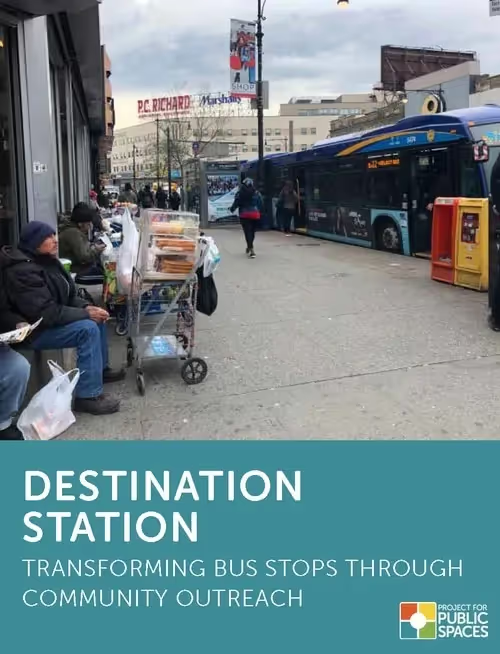A biweekly newsletter with public space news, resources, and opportunities.
A curated dispatch on all things public markets plus the latest announcements from the Market Cities Program.

How can bus stops be more than portals to pass through?
We can start by thinking about bus stops as clusters activity that should serve the community. Bus stops can be located near an array of food options, retail establishments, and services, allowing riders to cluster their errands around convenient hubs. They can be easily accessible on foot and via bikeshare or scooter, and close to parks, libraries, and other community destinations. They can include shelters, seating, and arrival information to make waiting riders comfortable. Surrounding street geometry can actively incorporate bus lanes and pedestrian safety, and network-wide considerations can keep the buses running efficiently.
To understand today’s reality, Project for Public Spaces spent several months riding bus lines, observing bus stops, and surveying those waiting thereabout what they would like to see at and around their bus stops. What we found, as described in this research brief is that people who ride the bus do in fact visit surrounding destinations (most frequently food stores), tend to feel neutral about the condition of their bus stops, and desire improved bus service and stop infrastructure.